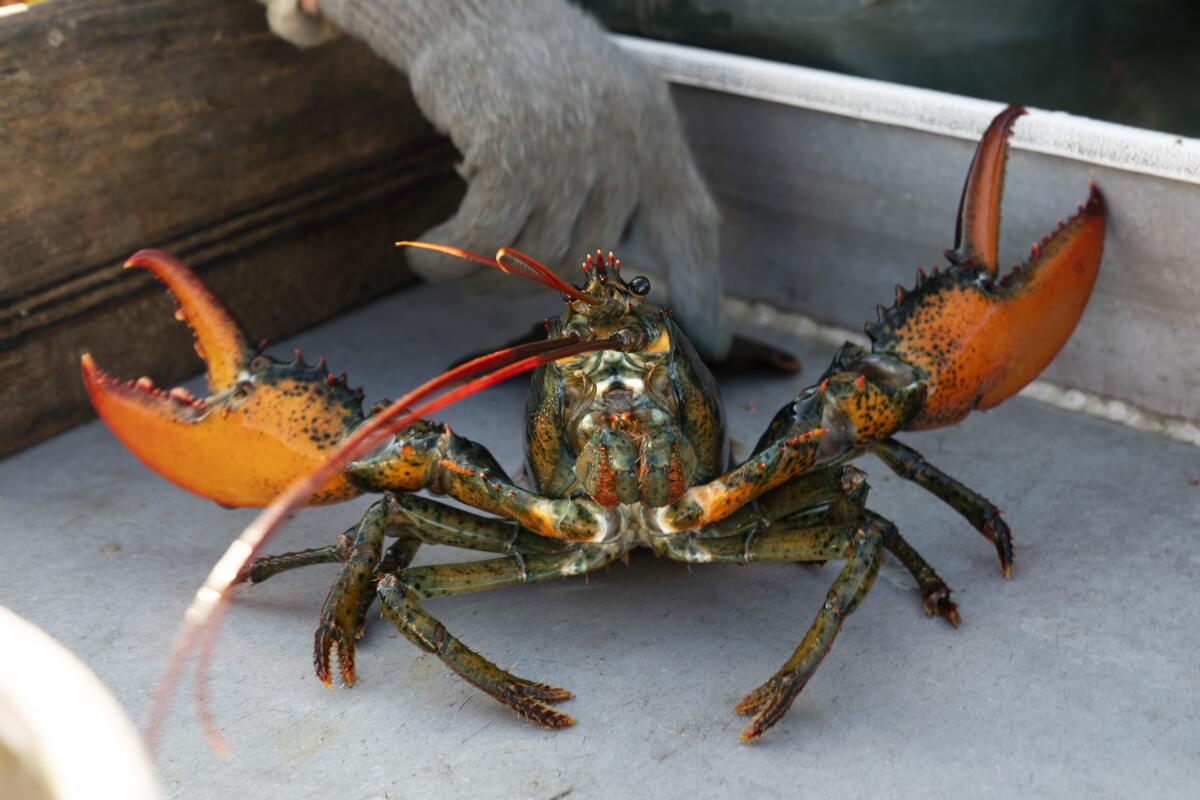A Word, Please: The dog-eating lobster and other hyphenated tales

“Are the hyphens in this sentence correct?” a colleague asked me recently: “The couple moved in to the beautiful 175-luxury apartment-home community just two weeks after it opened.”
Hyphens are often intuitive. People who’ve spent exactly zero minutes of their lives reading about hyphen rules tend to get right terms like “a good-looking car” or “a cloud-filled sky” without even thinking about them.
Other times, hyphens aren’t so clear. That’s especially true for compounds with more than two words, for example when you have “175” and “luxury” and “apartment” and “home” all modifying a single noun: “community.”
Luckily, with some hyphenation basics under your belt, you can make good choices in every situation.
The basic principle: Hyphenate words that work together to modify another word that follows. That is, words that team up to form an adjective, describing a noun. Or words that work together to form an adverb, describing a verb or an adjective.
Compare: “I saw a dog eating lobster” and “I saw a dog-eating lobster.” In the first one, “dog” isn’t part of an adjective. It’s the object of the verb “saw,” working as a plain-old noun. What did you see? A dog, and it was eating lobster.
But in “I saw a dog-eating lobster,” you didn’t see a dog at all. You saw a crustacean. Its tendency to eat canines is merely descriptive.
This is what hyphens do: prevent confusion. They help make it clear which part of a word cluster is the object or subject by sort of sequestering all the other words that could be mistaken for the object or subject.
In the jargon, we say hyphens connect “compound modifiers.” Adjectives and adverbs modify other words, so they’re modifiers, and when you string words together with hyphens, the result is a compound.
Most editing styles say you should not hyphenate adverbs that end in ly. There’s no chance “I saw a doggedly determined lobster” could be construed to mean that you saw a doggedly. There’s no such thing as a doggedly. The instant you see the “ly,” you know there’s a noun coming up soon that will be the thing that was seen.
Hyphens also link together certain nouns, like “mock-up,” “merry-go-round” and “kilowatt-hour.” Any dictionary will show you whether to hyphenate multiword nouns.
Hyphens sometimes attach prefixes and suffixes to words, like “co-worker,” “pre-eminent” and “re-create” when you want to distinguish it from “recreate.” Those rules are complicated, so just apply your best judgment.
But good instincts may not be enough when you’re looking at compounds of more than two words. For those, you have to put on your thinking cap. Even then, you may not get a clear answer.
For my 2014 book, “The Best Punctuation Book, Period,” I asked a panel of professional copy editors how many hyphens they would put in “30 day dry aged beef.” They disagreed. Some said they’d write it “30-day dry-aged beef,” others said it’s “30-day-dry-aged beef,” which is my preference because I see it as one adjective that tells you how many days it was dry-aged.
But there’s no right answer here.
In a “175-luxury-apartment-home community,” I vote for three hyphens. And unlike in the dry-aged-beef example, I feel pretty strongly that this is right and not a matter of taste. Why? Because “175-luxury” doesn’t make sense standing alone. Instead, 175 refers to the number of apartment-homes — all of which can be described as “luxury” units.
The rules for compound modifiers say to hyphenate them when doing so prevents confusion. That leaves a lot of room for interpretation. So just toss in a hyphen every time you think it’ll help the reader understand you.
June Casagrande is the author of “The Joy of Syntax: A Simple Guide to All the Grammar You Know You Should Know.” She can be reached at [email protected].
All the latest on Orange County from Orange County.
Get our free TimesOC newsletter.
You may occasionally receive promotional content from the Daily Pilot.



